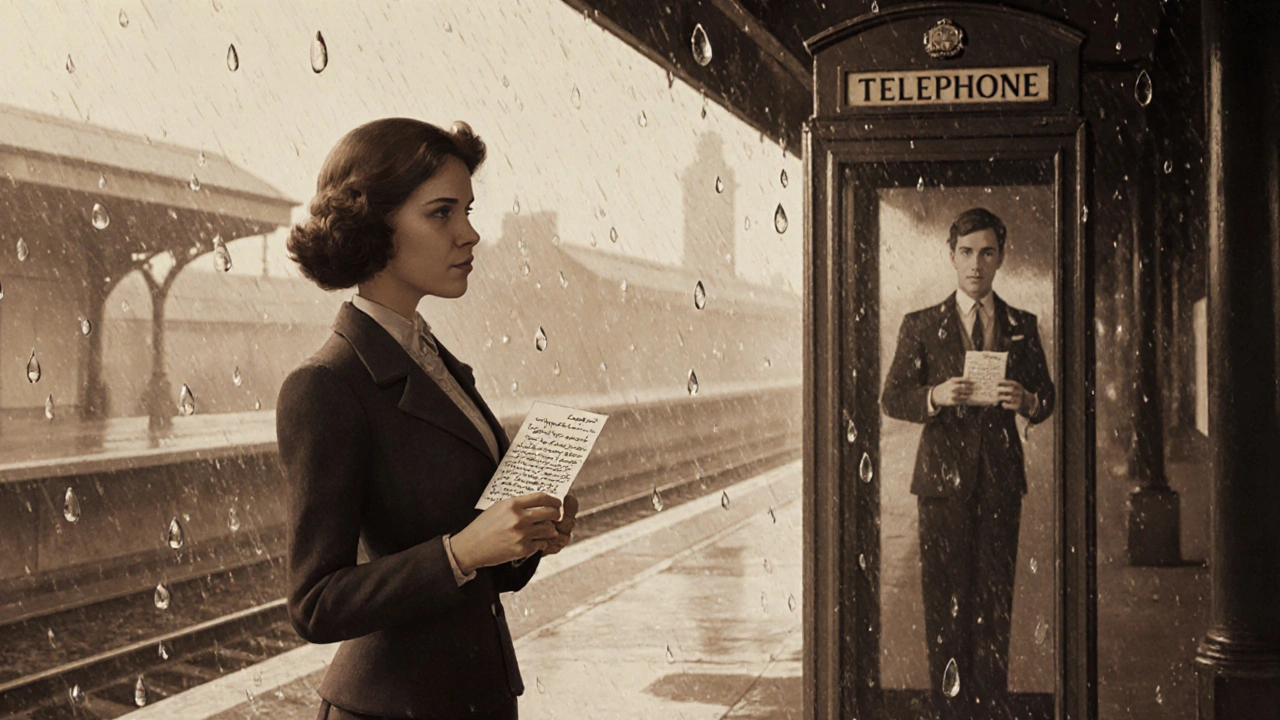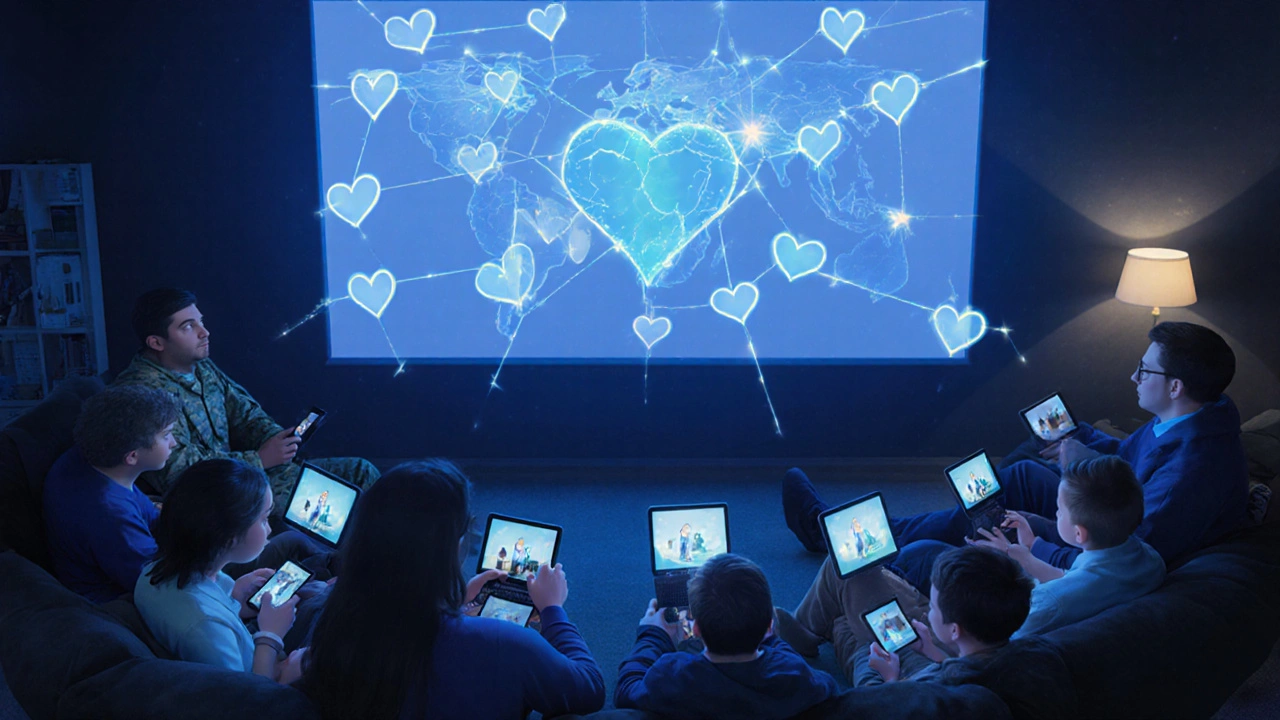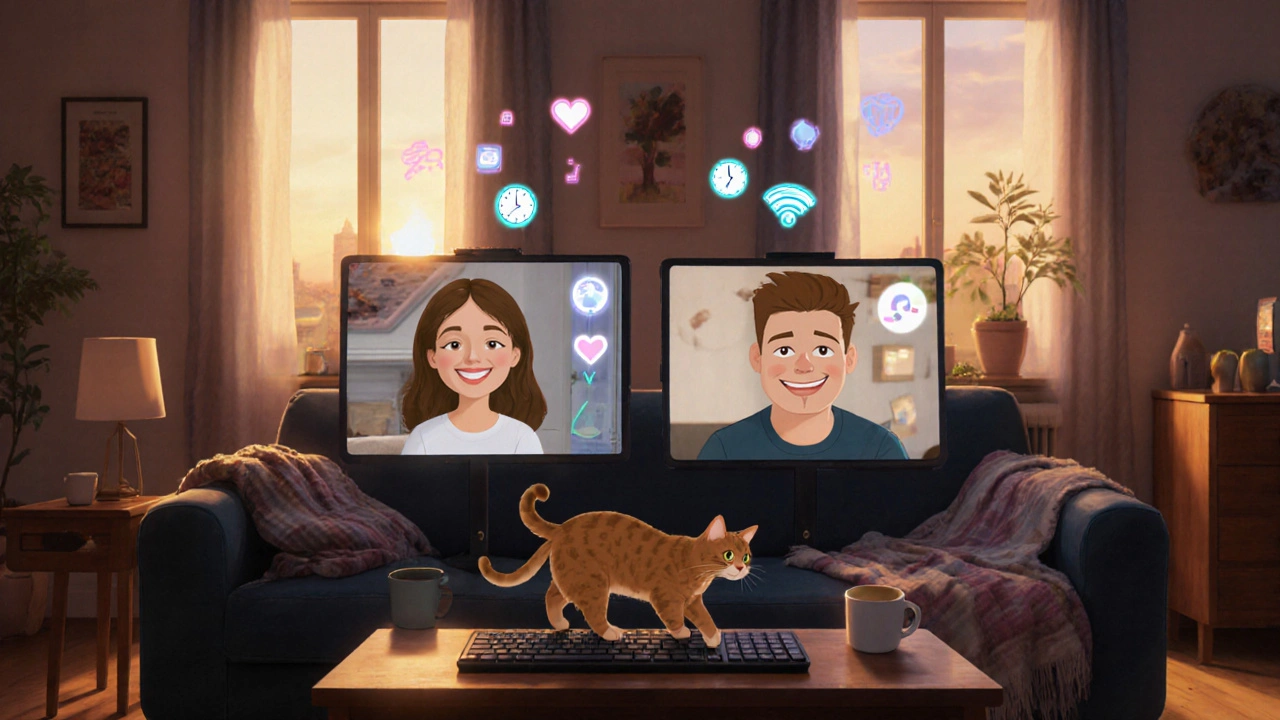There’s something raw and real about watching two people fall in love, only to have the world pull them apart. Not because they stopped caring - but because life, work, war, or chance forced them into different time zones, cities, or countries. Long-distance love stories in film don’t just show romance. They show resilience. And they’ve gotten more honest - and more complicated - as technology changed how we stay connected.
From Letters to Video Calls: How Tech Changed the Game
In the 1940s, lovers in films like Brief Encounter (1945) communicated through handwritten letters that took weeks to arrive. A single missed train could mean a missed meeting. A delayed letter could mean a broken heart. That kind of uncertainty wasn’t just drama - it was reality. People didn’t know if their partner was safe. They didn’t know if they’d ever see each other again. By the 1990s, You’ve Got Mail (1998) turned email into a romantic tool. Two people fell in love through anonymous messages, not knowing they were business rivals in real life. It wasn’t just about technology - it was about identity. Who you were online didn’t have to match who you were in person. That freedom made love feel safer, at least at first. Then came the 2010s. Films like 10,000 Km (2014) showed couples using video calls to say goodnight, argue over dinner, or cry together - all while sitting in different countries. The camera didn’t cut away. It stayed on the screen. You saw the lag. The frozen faces. The awkward silences. The way one person would forget to mute their mic while their cat walked across the keyboard. That’s not romance. That’s real life. And audiences noticed. Netflix data shows 10,000 Km has a 42% rewatch rate among long-distance couples - nearly double the average for romance films.The Three Acts of Separation
Most long-distance love films follow the same rhythm, whether they’re set in 1944 or 2024. First: the connection. It happens fast. A chance meeting at an airport. A shared ride. A text that turns into hours of talking. You feel it. The audience feels it. You know this is real. Second: the separation. This is where the film earns its weight. It’s not just about missing each other. It’s about the small things that break down over distance. The birthday you missed because of time zones. The panic when they don’t reply for 12 hours. The way a voice note feels emptier than a phone call. In Brooklyn (2015), Saoirse Ronan’s character writes letters home, but the silence between them grows louder than the words. She doesn’t just miss her lover - she misses the version of herself she was before she left. Third: the reunion. This is where films split. Some, like The Notebook (2004), use grand gestures - a boat, a storm, a shouted confession. Others, like 10,000 Km, end quietly. The couple just walks into each other’s arms, no music, no slow motion. No fireworks. Just exhaustion. Relief. A hug that says, “We made it.”
What the Movies Get Right - and Wrong
Long-distance couples say the best films don’t sugarcoat the struggle. Going the Distance (2010) got flak for making conflict resolution too easy - a 30-second argument and suddenly everything’s fixed. Real LDRs don’t work like that. One Reddit user, u/TimezoneTorture, wrote: “Most films skip the real struggle - time zone hell, missed calls during emergencies, the constant background anxiety.” But here’s what they get right: the small rituals. In Going the Distance, the couple schedules “Justin Long moments” - little daily check-ins where they share something ordinary: a funny meme, a weird dream, a coffee order. Real couples do this. A 2022 survey by film therapist Dr. Rebecca Torres found that 63% of long-distance couples use movie nights as relationship maintenance. They pick films that mirror their situation. Couples under six months apart watch comedies like The Holiday (2006). Those separated over 18 months choose heavier dramas like Atonement (2007). It’s not escapism. It’s validation. Where films fail? Reunion timelines. In real life, getting visas, saving money, finding jobs - that takes years. But movies? They always show the reunion after six months. One poll of 1,200 long-distance couples found 68% were frustrated by that. “They make it look like love conquers all,” said one respondent. “But what if love doesn’t conquer the paperwork?”Who Watches These Films - And Why
These movies aren’t just for couples. They’re for anyone who’s ever loved someone far away. A soldier’s partner. A student abroad. A remote worker in Berlin married to someone in Toronto. The International Long Distance Relationship Association says 14 million Americans were in LDRs in 2023. And 78% of them said films helped them feel less alone. Demographics tell a clear story. Viewers under 25 prefer digital-age films - the ones with FaceTime glitches and Instagram DMs. Those over 35 connect more with older films like Sleepless in Seattle (1993). Why? Because they remember answering machines. They remember waiting days for a letter. They remember the weight of silence. And it’s not just women. Streaming data from Netflix shows male viewership in LDR films jumped 37% between 2018 and 2023. These aren’t “chick flicks.” They’re human stories.
The Future: VR Dates and AI-Driven Plots
The genre isn’t slowing down. In fact, it’s getting weirder - and more personal. At the 2023 Sundance Film Festival, three new films pushed boundaries. Signal Strength used real-time GPS data to change the story based on where the viewer was. If you were in a different country than your partner, the film adjusted the ending. Buffering didn’t just show video calls - it used actual buffering icons as emotional metaphors. A frozen face wasn’t just a tech issue. It was the moment love stalled. Even studios are listening. Amazon’s upcoming film Across the Miles (2024) didn’t just hire screenwriters. They worked with real LDR couples from the International Long Distance Relationship Association. The script includes 37 real-life scenarios - like the time someone had to choose between a job offer and their partner, or how to handle a breakup over Zoom. And then there’s VR. In March 2023, Oculus partnered with Warner Bros. to create a “virtual date night” experience for The Kissing Booth 2. Fifteen thousand people logged in at once to watch the film together in a digital living room. They could text, laugh, even share virtual snacks. It wasn’t just watching a movie. It was recreating the feeling of being together - even when you weren’t.What Makes These Films Last
The best long-distance love stories don’t promise happily ever after. They promise something harder: that love can survive not in spite of distance - but because of it. They show us that connection isn’t about being in the same room. It’s about showing up - even when it’s hard. Even when the Wi-Fi drops. Even when you’re exhausted. Even when you’re scared. And that’s why, in a world where everyone’s scrolling, swiping, and ghosting, these films still matter. They remind us that love isn’t about perfect timing. It’s about showing up, again and again, across oceans, across screens, across silence.They don’t just entertain. They hold space for the quiet, stubborn kind of love that doesn’t make headlines - but keeps people going.

